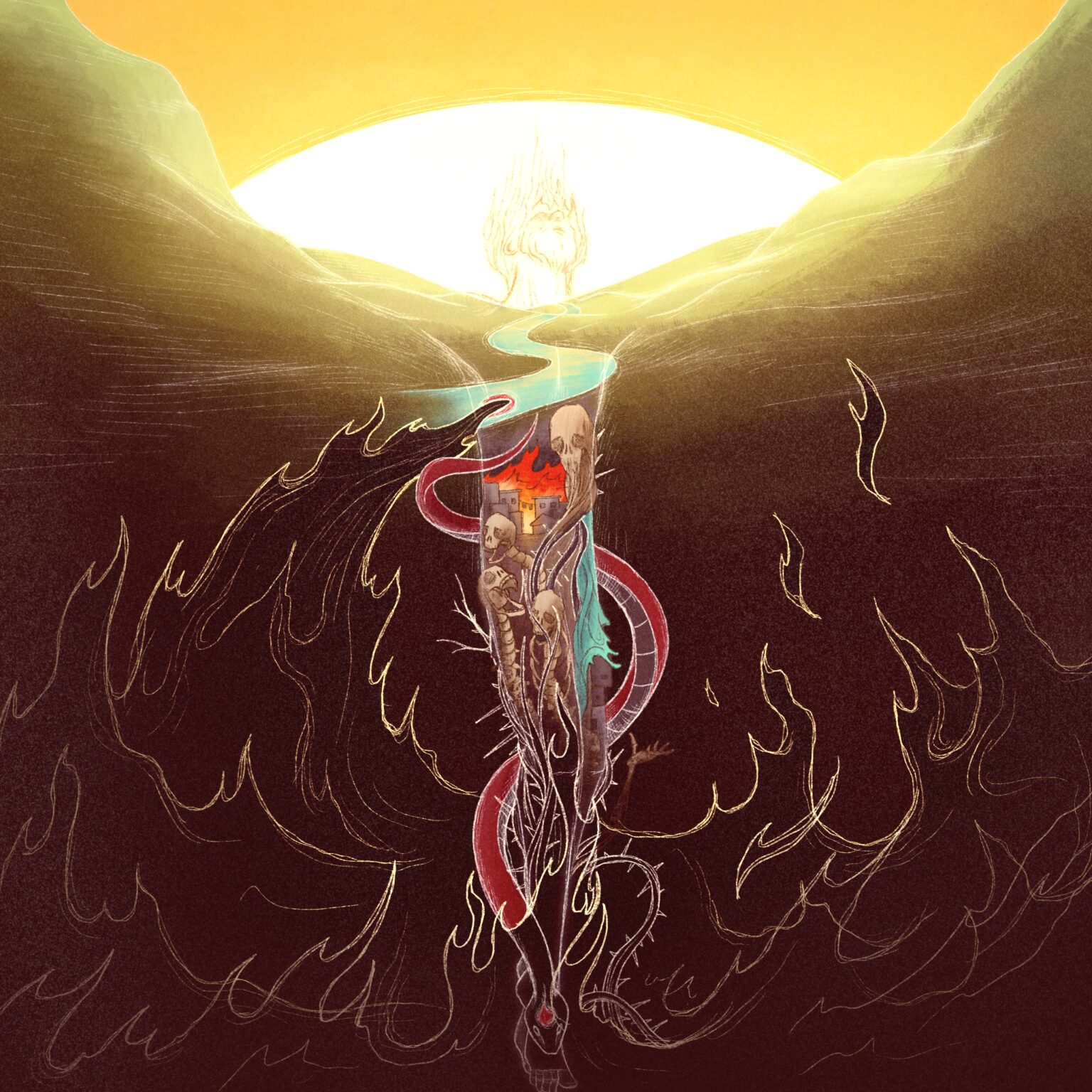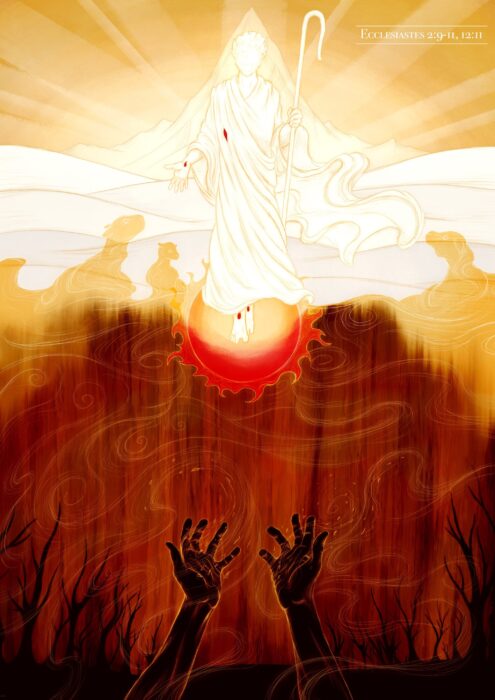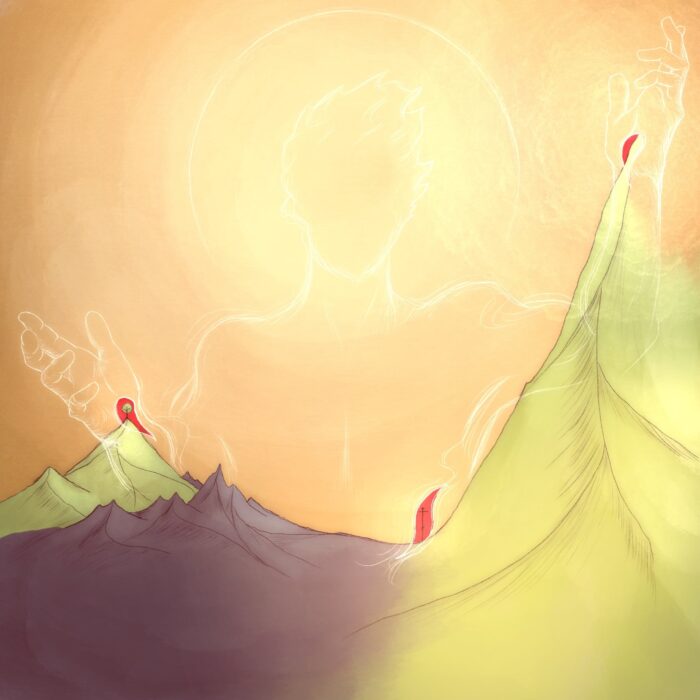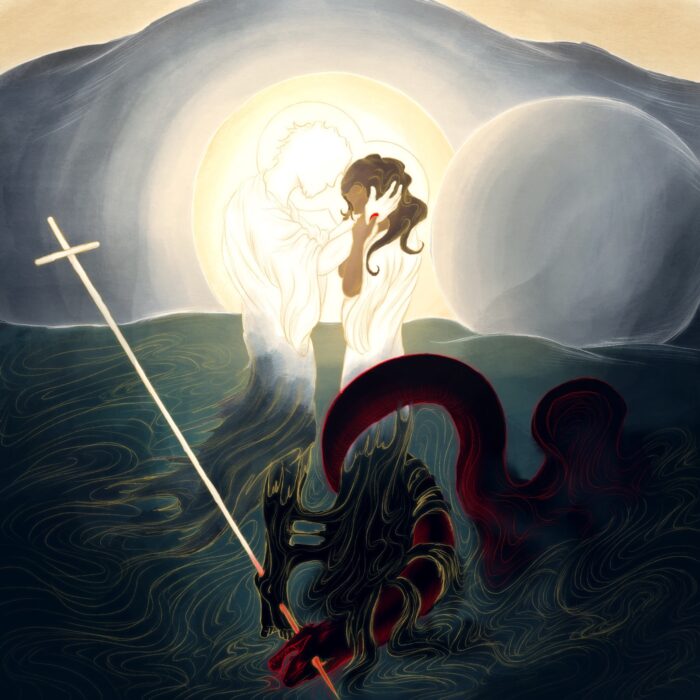Ecclesiastes 3:11, “He has made everything beautiful in its time.”
This is a sweeping and implication-laden statement. God has made everything beautiful in its time. Is that true? Is it true that God has so designed reality that everything in existence—everything that exists; everything that has happened, is happening, will happen; every pain and torment and sorrow and joy and hope and achievement—that everything is beautiful in its time?
While this is the only passage I know if that makes this assertion so clearly, there are many other places in scripture that point to the same reality:
It is implied in Psalm 135:6 and similar passages about the Lord’s total sovereign freedom (ie, if He does as He pleases and, ultimately, only what is holy (good, true, and beautiful) pleases Him, then all things must—in one way or another—ultimately be beautiful).
It is anticipated in Isaiah 11:9 and Habakkuk 2:14 (what else can the glory of the Lord saturating all reality mean but that all things will be beautiful with His beauty?).
Indeed, it is—I would argue—necessary from the very first verse in scripture: “In the beginning God created the heavens and the earth…” God creates all things from nothing, with no external bounds or impositions, and what God creates must finally be in accordance with Himself. Thus, the fact that the Holy (beautiful) God we meet in scripture is the sovereign and free Creator who made all things from nothing drives us to conclude that, when all is said and done, it must be the case that ALL of creation will accord with Him, will point to Him, will be filled with His glory, will be beautiful.
And then, in the New Testament there are plenty of passages that teach the same thing:
All things summed up in Christ (Ephesians 1:10); all things for Christ and reconciled to God in Christ (Colossians 1:15-20); all sentient creation confessing Jesus as Lord to the glory of the Father (Philippians 2:6-11); God being “all in all” (1 Cor. 15:28); all things from, through, and to God (Romans 11:36); the final victory of God in Christ by which all tears are wiped away and the universe is illuminated by the glory of God in the face of Jesus Christ (Revelation 21-22), etc. etc.
Scripture is full of the teaching that the final state of God’s creation is beauty—that is to say, all things drawn into perfect consent with (aka, made fitting communicators of) the Name of the One True God in the slain and risen Son, by the work of the Spirit.
And so, though Ecclesiastes puts it, perhaps, most simply and clearly, it is not strange teaching that ALL THINGS are beautiful in their time. A few thoughts on this concept…
He has made — That is to say, the pancalism (pan=all, kalos=beautiful) of reality is the work and intention of its Creator, of the Triune God. GOD has made everything beautiful. He is the Beautifier of reality. Apart from His work, there is nothing beautiful since beauty—I would argue—is a consent to and an appearing of the love of Father and Son within the Spirit.
Everything — No tricks here, the word translated everything just means “everything.” Now, someone could argue it is poetic….that surely the holocaust or the horrors of abuse and murder and rape—surely that is not beautiful? No. We can give a strong and scripturally-warranted affirmation that sin is NOT beautiful.
However, at the same time, notice that “He has made” implies that there is divine action that causes “everything” to be beautiful. WE make things ugly, WE make things perverse, WE make things harmful—but GOD is able to make even these things (indeed, “everything”) beautiful.
So, though sin is horrific, is ugly, is damnable and repulsive…..even this is included in the “everything” that God makes beautiful—in its time. Everything is included. How can that be? Well….continuing on.
Beautiful — The word here is most often used for physical beauty, but it implies a fittingness, a completeness and harmony of parts that causes the whole to sing. God has made all things to consent, to agree, to harmonize in their time. To consent / agree / harmonize with what? Well, with Himself, with His glory (Hab.2:14, Isaiah 11:9, Romans 11:36, etc). Which is to say—I would argue—with the reciprocal love of Father and Son in the Spirit. When God said “let there be” He began the creation of a reality that He would see through to a beautiful end, a reality that He would cause—in every facet and part—to be “filled with the knowledge of His glory,” to be illuminated by the splendor of His Name.
In Its Time — This is crucial to see. Everything is NOT beautiful at all times. Everything is NOT beautiful in all contexts. As the preceding section of Ecclesiastes 3 makes clear, “For everything there is a season, and a time…” So, back to the issue of sin…..sin is not beautiful considered in and of itself….sin is not beautiful within the shrunken and darkened world that it creates around itself. All things are beautiful only in their time—which is to say—only within a certain context.
Now, in one sense the Preacher is saying that there are different times where “all things” have their turn at being fitting (see v. 2-8). But, as I’ve tried to show, there is biblical warrant to understand him as pointing beyond that to a “time” when all things will be simultaneously received as beautiful…..when there will no longer be a place or time or happening that is not beautiful to the observer. How can that be?
Well, first, the observer must be one who has themselves been made beautiful, that is to say, who has been brought to a place where their deepest self consents to the Name of God as made known in Jesus Christ. The observer must be one who tastes God made known in Jesus as the supreme beauty.
And secondly, this age of manifest pancalism can only be brought about through the crucifixion and resurrection of the Son of God, in whom all things consist. Yes, as Colossians makes clear, it is the blood, the death, the sin-bearing, horror-enduring, hell-exhausting work of the Son that harmonizes all of reality to God (1:20)….through both condemnation and salvation.
God makes everything beautiful by His WORD….and His final word is the incarnate Son who bears all horror in Himself on the cross, and in so doing overcomes horror and makes it a part of God’s final victory. By carrying and experiencing ALL that is not beautiful (all that opposes God) on the cross, by dying under it and as it, and then by His resurrection that carries the agony of the cross up into the joy of God—by doing this, Christ has achieved and is achieving the beautification of all things. And if we wonder how this can be, we’ve already been given the firstfruits of this joy-filled harvest.
Yes, the first fruit of the harvest of beauty that will be gleaned from the fields of this world’s sorrows grows on Calvary’s tree. On Calvary we see the supreme ugliness, the supreme horror, the supreme sin, the supreme terror…..there is no greater calamity that Creation is capable of sustaining than this. And yet, by the transfiguring light of the resurrection, the cross has been turned to the apogee of beauty, to the supreme instance of God’s Name within space and time, to the song of heaven and hope of earth. And so, when we look back to the resurrection-illuminated cross, we see the pancalastic hope of the universe…..yes, there we see ALL horror turned to beauty……we’ve already seen it happen, we already know it is possible, we sing of it every weekend. And in this one—in whom all things receive their being and form—in this one, following the pattern of this one, ALL things will be made beautiful in their time.
Hallowed be the Name that will fill the universe as the waters cover the sea!




